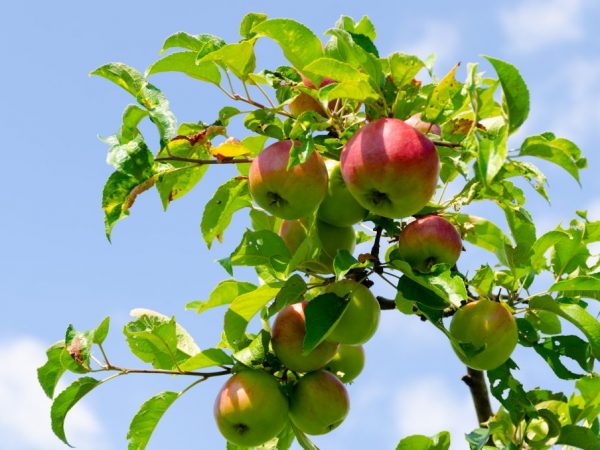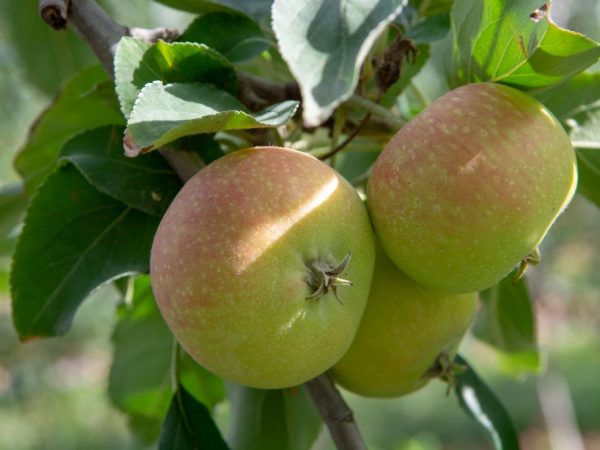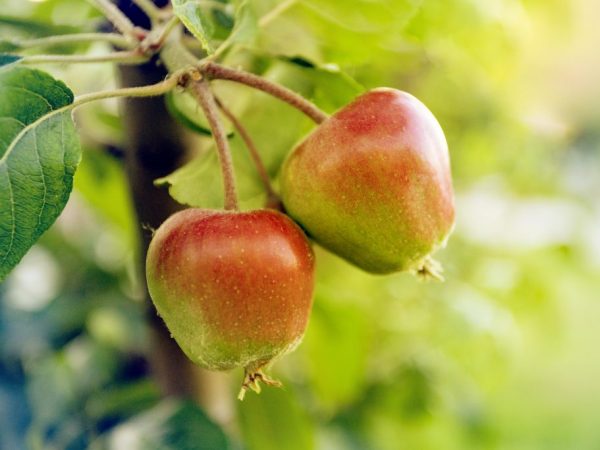Rules for planting apple trees in Siberia
Growing apple trees in Siberia is not an easy task, here you need to know the peculiarities of planting, and choose the right variety, and take care of it properly. Let's look at all the nuances of this process and determine how to protect a fruit tree from harsh weather conditions.

Rules for planting apple trees in Siberia
Suitable varieties for Siberia
Due to the extreme cold inherent in Siberia, not all varieties are able to grow and bear fruit, so you need to choose which apple tree is best to plant.
There are several really worthy varieties: these trees withstand low temperatures, give a high yield and are not inferior in taste to crops growing in other regions of Russia with a temperate climate.
- Among the well-proven ones, the Altai purple one stands out. It is a short plant with a rounded crown and relatively small fruits. Apples usually weigh about 60 g and are greenish-yellow in color with a reddish blush. The pulp of the fruit is creamy and dense, the taste is sweet and sour. The average yield from one tree per season is at least 120 kg. This variety is also good in that its fruits have a long keeping quality, are stored for up to 170 days and are universal in their purpose. It is scab resistant, but can sometimes get sick with moniliosis.
- The variety with large fruits is called Ermakovskoe mountain. It experiences an air temperature of -51 ° C. It is a medium-sized tree with a round crown. The pulp is white, sweet and sour. Fruiting begins in the 4th year, the yield is up to 90 kg. The disadvantage is the rapid shedding of fruits and poor resistance to scab, but this disease affects only the leaves.
- Bayan's apple tree, like the previous variety, begins to bear fruit as early as the 4th year. Its peculiarity is that the apples are quite large, which is unusual for such an area as Siberia. One weighs 140 g, and its color is bright purple. It is not surprising that this tree has gained great popularity among fans of summer cottages: the harvest can be harvested in early autumn, while one tree gives up to 75 kg.
Landing
Taking into account the long winter of Siberia, the short growing season and the too close occurrence of groundwater, it is necessary not only to choose the right variety, but also to know exactly how to plant a seedling and take proper care.
Pay attention to the timing of landing, because the weather in the northern region is unpredictable.
Timing
There is no specific calendar time for planting an apple tree in spring. Winter can be delayed, it is better to just wait for warming and melting snows. When the soil is soft enough to work with a shovel, all gardening activities can begin.
There are many benefits to boarding this early. The seedling is given more time to take root, and its growing season increases.
Spring is the most suitable time for planting apple trees in Siberia.
In summer, planting is not advised, only in rare cases, because at this time of the year the soil is not rich in minerals, but a variety of insects are enough. It is worth making a lot of effort to protect the plant from this.

The best time to plant is spring or fall.
Autumn may well be suitable for planting an apple tree in Siberia. The main thing is not to delay and carry out the procedure no later than October. The advantages of this period are that the seedling will have enough time for the development of the root system, it has time to prepare for winter, and in the spring they wake up and begin the growing season earlier.
Preparing for landing
It is necessary to take into account the distance between the seedlings: you need to try to give them more space so that they are no closer than 5 m from each other
The soil is also worth preparing. If the soil is stony or clayey, it is worth digging a deep hole and filling it with mineral fertilized high-quality soil. They do this in advance, preferably a year in advance, then the soil will have time to settle.
Among other things, it is important to choose the right apple variety depending on the expected temperature in winter:
- low winter-resistant ones withstand -27 ° С (Spartan, Lobo);
- for medium-winter resistant, the maximum indicator is -35 ° С (Champion, Antonovka, Melba);
- winter-hardy ones are able to hold out at -40 ° С (Rudolph, Gift of Autumn, Silver Hoof);
- highly winter-resistant can tolerate temperatures below -40 ° C, there were cases when apple trees were completely restored even after a terrible frost at -53 ° C (Ranetki, Ural bulk).
Landing scheme
Growing a fruit tree in Siberia is not easy; it will only succeed if all the technology is done correctly.
- Due to the climate in the area, a hill landing is ideal. With the onset of warmth, the seedling will warm up faster, its root collar will not rot, and the chances that it will not begin to warm up increase. The hill is not difficult to make. It is better to prepare it in advance in autumn, 30 cm high.
- In the spring, another bucket of compost and some wood ash are poured into the same place. This mixture must be mixed with earth.
- A tree is planted in place of the hill so that its root collar is slightly above the soil level
- Watering is carried out immediately in the form of 3 buckets of water.
- It is worth driving a stake to the seedling so that the wind does not harm it.
- Mulching should be carried out with organic substances: straw, foliage and hay. These materials are suitable, because in such an environment microorganisms develop better, which feed the plant well.
Care

A good harvest depends only on you
The key to a good harvest and a long life of a garden tree is reasonable and timely care. It is important to protect against pests and water on time, do not forget about vaccination.
Watering
A young tree needs to be irrigated not as in the middle lane - once a week, but much less often, in Siberia there is already high humidity. It is necessary to introduce moisture into the soil as it dries. Adults do not need water.
Fertilizers
Top dressing is very important, especially at first. During the growing season, the procedure is carried out three times. Any complex organic fertilizers are suitable: mullein, bird droppings diluted with water or dry, compost.
Of the minerals, preference is given to those that contain nitrogen: potassium sulfate, ammonium sulfate.
Pruning
The classic option for pruning in Siberia is a 45 ° side cut without hemp. This method is good because thanks to it you can easily change the direction of the tree's growth, speed it up.
It is recommended to prune the apple tree in the spring, but in case of freezing it is allowed to transfer it to the beginning of June. It is necessary to prune branches for shoots.
Graft
Trees growing in harsh climates need grafting. It makes the plant more resistant to frost and doubles its yield. This process is advised to be carried out in the spring. Rootstocks are grown by spring or summer green cuttings.
In Siberia, it is better to graft into the crown, make it no higher than 1 m above the ground.All branches are grafted separately, for each there are 6 pieces. approximately, the distance between them should reach at least 10 cm.
In the first year after this event, it is better to suppress the growth of wild growth, in the summer it is allowed to repeat this 3 times. You need to control those that are too long and cut them off.
Protection against diseases and pests
Siberian apple trees do not stand out for special diseases from others. The only thing is that they can get sun-frost burns more often than others. The best defense is whitewashing. The trunks can be whitened with the first warming.
The tree can be sprayed against insects. Bacterial and herbal remedies are suitable as an effective solution: Fitoverm or a decoction of bitter wormwood (350 g of dry material per 10 liters of water) and an infusion of chamomile and onions. Spraying is carried out after flowering and a second time after a week.
The leaves of the apple tree can be affected by scab, but gardeners with many years of experience in caring have found a 100% way to protect against this disease - the homeopathic remedy Healthy Garden (the proportion is indicated on the package).
Summing up
Planting and growing an apple tree in Siberia is not easy, there is a high probability that it will freeze or simply not take root, but knowing how to care for it will greatly increase your chances of having your own fruit tree in the garden.
With experience, it will be much easier to transplant trees, protect them, prepare for winter and increase yields.

